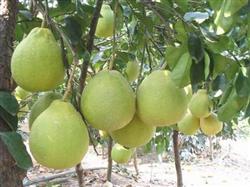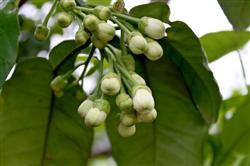Characteristics and cultivation techniques of sweet pomelo

Sweet pomelo is a new variety of tangerine introduced from Japan in 1998, and it has been successfully planted in our city. Sweet pomelo has five advantages, such as convenient management, excellent flavor, high yield, resistance to storage and transportation, and strong cold resistance. Among the late-ripening citrus varieties, it is the only one that can be eaten immediately and is deeply loved by fruit growers and consumers. Sweet pomelo won the gold medal at the 2002 China (Zhejiang) Citrus Expo and was praised by participating experts and leaders at the evaluation meeting of new citrus varieties held in Hangzhou in January 2003. the products were in short supply at the agricultural exhibition held in Hangzhou in January 2004. it is listed as a new citrus variety popularized in Lishui. In order to promote the planting and promotion of sweet orange in our city and provide technical support for the production of fruit farmers, the variety characteristics and cultivation techniques of sweet orange are introduced as follows: first, biological characteristics (1) the growth and fruiting habit of sweet grapefruit is strong, the crown is round, the tip of the branch is dominant, the ability to sprout into branches is strong, the shape of branches and leaves is similar to that of Wenzhou tangerine, and there are small thorns on the branches, and the phenophase is similar to Wenzhou mandarin. Middle-aged and young robust trees with leaves and flower branches account for more than 90% of the flowers. The number and length of leafy flower branches are higher than those of other citrus varieties, the longest of leafy flower branches is more than 35 cm, and the number of leaves is more than 13. Spring and autumn shoots are the main fruiting mother branches, and fruit branches inside and outside the crown can bear fruit. The fruit expansion period is from July to late October, and the fruit is mature from the end of November to the first ten days of December. (2) the adaptability and stress resistance of sweet orange pomelo is strong. Ponkan, Huyou pomelo and Wenzhou mandarin are all suitable for planting, and the cold resistance is stronger than Ponkan, and it can be safely planted in Lishui, Wenzhou, Quzhou and other places of our province. Sweet pomelo is drought-resistant, barren-resistant and pest-resistant, so it is suitable for planting in hillside land. Second, the main economic characters (1) Seedless or seedless characters, most of the fruits are seedless, and a small number of seedless fruits have about 3-5 seeds per fruit. at present, the selection of seedless individual plant is still being carried out, and the cause of seedlessness is also being studied. (2) Fruit quality and storability are flat and round, in the shape of steamed bread, neat and dignified, with an average fruit yield of 230 grams. The peel is orange, the fruit surface is not very smooth, and it is a little difficult to peel, but it is easy to peel pomelo. Orange flesh, soluble solids content of more than 12%, soft and juicy, sweet, clear mouth, no sour taste, orange and pomelo aroma, the fruit is similar in quality regardless of size. The fruit matured from the end of November to the first ten days of December, packed with single fruit with thin film and stored at room temperature until the end of May of the following year. (3) early fruit and high yield. High grafted on the rootstock of Fructus Aurantii, mid-late ripening Wenzhou mandarin and other trees, a large number of fruits were produced in the second year, and the plant yield reached 30-50 kg in the third year, with a yield of more than 3000 kg per mu. 3. Cultivation techniques 1. Selection of site conditions: sweet pomelo can be planted in suitable planting areas of mandarin, pomelo, Wenzhou mandarin and other varieties, with a deep and fertile soil layer below 400 meters above sea level. 2. Planting density and planting: if it is a hillside, it is necessary to dig a horizontal zone more than 2.5 meters wide, and then dig a planting hole or planting ditch in the middle of the horizontal zone, 60 cm deep and 100 cm wide. Apply green manure such as garbage, fence fertilizer or green moxa in the planting ditch, one layer of fertilizer and one layer of soil, and the uppermost layer of subsoil is 15 cm apart from organic fertilizer, so that the root system will not come into direct contact with fertilizer. After each plant is evenly mixed with 0.5 kg of calcium magnesium phosphate fertilizer and soil, it is covered on the root system of the seedlings, and the root system is spread layer by layer. If you plant on a sunny day, water should be thoroughly watered. If close planting is planned, 150 plants (1.5 × 3 meters) will be planted per mu, and 75 trees (3 × 3 meters) will be planted per mu if permanent planting is adopted. It can be planted from late September to early November every autumn and from mid-February to the end of March in spring. 3. Fertilization: compared with Ponkan, Wenzhou mandarin and other varieties, the number and quantity of mandarin are required to be more, because of its more flowers, large fruit, large fruit and large nutrition consumption. Combined with the shooting of spring, summer and autumn shoots, young trees were applied 5-7 times a year, that is, once a month from March to the beginning of August, and stopped from September to October to prevent late autumn shoots. Winter fertilizer was applied again in November, with an average annual application of 0.2-0.6 kg of urea, 0.1-0.3 kg of potassium sulfate and 0.2 kg of phosphate fertilizer per plant depending on tree size. The results showed that the tree applied 4-5 times of fertilizer in the whole year, 1 time of picking fruit fertilizer, 1 time of pre-bud fertilizer in spring, 2-3 times of strong fruit promoting shoot fertilizer, 30%, 20%, 50%, 2500-3500 kg per mu, 100kg urea per mu, 150kg calcium superphosphate, 150kg potassium sulfate, 3kg borax, 100kg cake fertilizer or 1000 kg fence fertilizer, and the ratio of nitrogen, phosphorus and potassium was 1.00.5mol. 4. Management of flowers and fruits: in years with more flowers, there is no need to protect flowers and fruits. In years with less flowers, 92 ○ 1g can be used to dissolve in alcohol and then mixed with water 20-25kg. The fruit can be preserved at 2 / 3. The weight of single fruit of sweet grapefruit is larger, the ratio of leaf to fruit should be kept at about 40:1, and the excess fruit can be thinned. First, the fruit of diseases and insect pests, deformed fruit and dense fruit can be thinned, and then the surplus fruit should be thinned. It is suggested to carry out bagging after fruit thinning. In order to produce pollution-free and high quality fruit. 5. Pruning and pruning: cut short the branches and branches that cause premature senescence due to too much fruit, promote new shoots, ensure high and stable yield every year, and keep strong for over-dense branches; for strong fruiting trees, cut off some cross branches, long branches, serious diseases and insect pests, and hidden branches. 6. pest control: it is consistent with the pest control measures of Ponkan and Wenzhou mandarin, focusing on red spiders, rust wall lice, scale insects, aphids, leaf miner and scab. 0.5-1 degree stone sulfur mixture is used to clear the garden in winter, and it is suitable for scientific control according to the occurrence of diseases and insect pests from March to October. Commonly used pesticides are Bordeaux solution, topurazine, triazotin, acarone, omethoate, Lesbon, imidacloprid, methamphetamine and so on.
- Prev

How to fertilize the pomelo trees that have borne fruit in spring?
1. Fertilization of 1-3-year-old young trees should be combined with the characteristics of multiple shoots of pomelo trees in order to accelerate the growth and high yield of young trees. Fertilization before shoots can promote the growth of shoots and make the shoots grow healthily. Topdressing is mainly quick-acting fertilizer. The method of fertilization: apply frequently and less, and apply more spring shoot fertilizer. The fertilization time is February, May and July, respectively. ...
- Next

Fruit planting: technical measures to promote flower and protect fruit of pomelo
First, in order to promote the early flowering of fruit trees, we must control the vegetative growth of the tree potential, turn the growth center to reproductive growth, and promote flower bud differentiation in the year before fruiting: 1, control the vigorous growth of vertical roots and cultivate a large number of lateral and parallel roots to promote flower bud differentiation; 2, support, pull, drop, and increase branches.
Related
- Moge, come on! The staff of the peasant association in the producing area of cantaloupe were frightened when the crowd gathered.
- Causes and Solutions of low Fruit setting rate of Apple
- Symptoms and control measures of passion fruit virus disease
- Fruit growing lesson: how do apple orchards keep high yields?
- Can you build orchards in the mountains? What are the pros and cons?
- How to manage the coloring period of Crisson grape?
- This paper introduces the processing technology of two kinds of fig products.
- How much is a month for retired teachers in rural areas by 2020?
- How can strawberry planting increase sugar content? We should pay attention to management in many aspects.
- What are the cultivation techniques on how to improve the yield of golden fruit?

